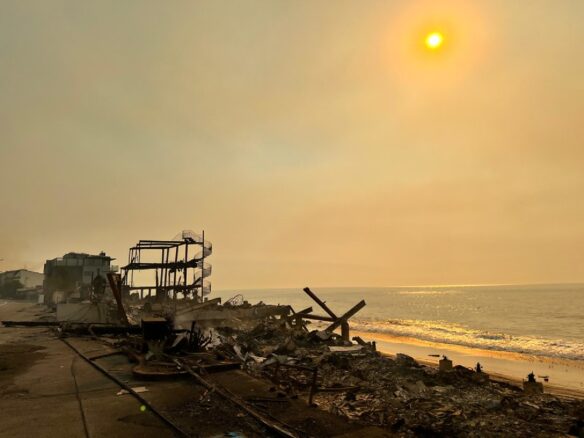Excerpt:
The face of summer is transforming, as people today face more frequent, longer-lasting and hotter heat waves than they did several decades ago
Children growing up in Philadelphia today experience more than four more heat waves every summer than those who grew up there in the 1960s. Kids in San Francisco today endure nearly seven more heat waves per year than their counterparts in the mid-20th century did. And in New Orleans children are currently subjected to nine more.
Exactly how many heat waves hit any city in a given summer has always been subject to the whims of the weather. But is very clear that—with global warming now heating the world to 1.2 degrees Celsius above its average in the late 19th century—summers are dramatically ramping up. “There’s no question that summers have changed,” says Kristie Ebi, an epidemiologist who specializes in heat-related health risks.
In short: The milder summers of our parents and grandparents are a thing of the past.
Today’s summers on climate change steroids are not just a matter of shirts increasingly clinging to sweat-drenched backs or individuals needing to crank up the air-conditioning more often. They pose a major and deadly public health threat that people, cities and countries are only beginning to grapple with. Record-shattering heat waves last summer—the hottest in the past 2,000 years—underscore the growing danger. Some 2,300 people in the U.S. died from excessive heat during that season, the highest number in 45 years of recorded data, according to a recent Associated Press analysis of data from the U.S. Centers for Disease Control and Prevention. And some experts say that record only counts a fraction of the true number of heat-related deaths.
This summer is very likely to bring more of the same. Though it is impossible to say where and when any specific extreme heat waves might take shape more than a few days ahead of time, the European Union’s Copernicus Climate Change Service’s forecast shows a greater than 50 percent chance of above-normal temperatures across nearly all of the Northern Hemisphere. The National Oceanic and Atmospheric Administration also predicts above-normal temperatures for most of the U.S., especially the Southwest and Northeast. The high odds of a hot summer in those areas are primarily based on the long-term global warming trend, notably in the Southwest, says Dan Collins, a meteorologist at NOAA’s Climate Prediction Center. In “this season and that region, the trends are particularly strong,” he says. And these predicted temperatures are measured against a baseline of “normal” readings from 1991–2020—when global warming’s impact was already becoming measurable—meaning this summer is even hotter when compared with those that occurred earlier in the 20th century.
So far these forecasts are proving accurate. A major heat wave developed over the western U.S. early in June, sending temperatures soaring to levels more typical of those later in the season. That same dome of heat had been roasting Mexico since the beginning of May, breaking records and causing howler monkeys and birds to drop from trees after dying of heat stroke and dehydration. A heat dome is bringing potentially record-breaking hot temperatures to the eastern half of the U.S., especially New England, in mid-June. Outside of North America, broad areas of Asia—from Gaza to Bangladesh to the Philippines—sweltered in climate-change-enhanced heat during April and into May. These events show how summer heat is bleeding into spring, as well as into autumn…









